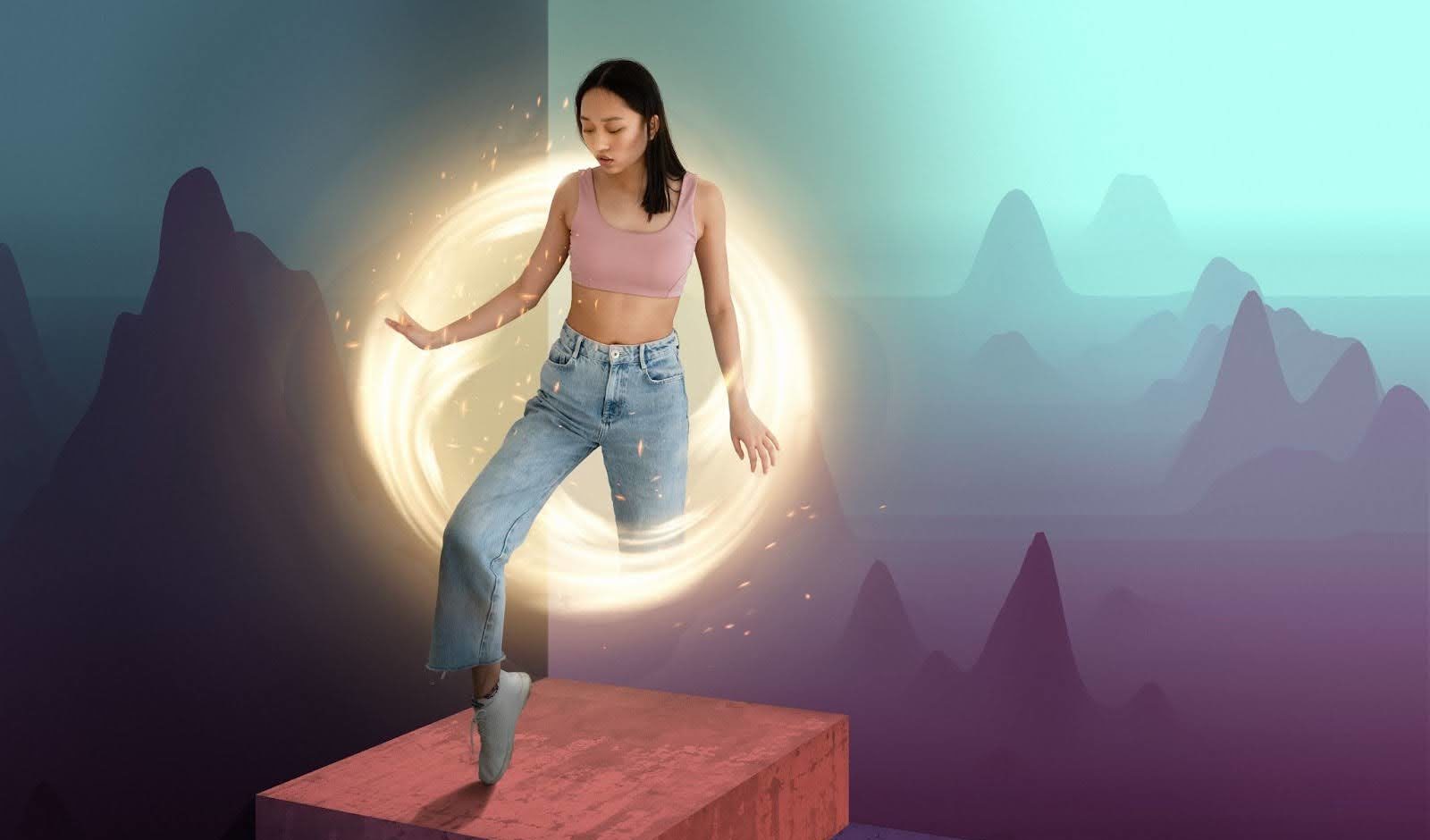You stare at the blank canvas. Nothing comes to mind. The pressure mounts and frustration builds. We’ve all been there—creative blocks can feel overwhelming. But they don’t have to last forever. In today’s fast-paced, digital world, learning to break through creative stagnation is essential for every artist.
This guide explores practical techniques and strategies—from neuroscience and psychology to digital tools and environmental adjustments—to help you overcome creative blocks and keep your artistic momentum flowing. Whether you’re a seasoned professional or just starting out, these tips will help you regain your creative flow.

The Nature of Creative Blocks

Psychological Factors
- Stress and Anxiety: High-stress levels and self-imposed pressure can choke off creative energy. Anxiety often leads to self-doubt, making it challenging to generate new ideas.
- Perfectionism: The desire for flawless work can cause you to overanalyse your ideas and slow the creative process.
- Fear of Failure: Worrying about judgment or criticism can stifle experimentation and innovation.
Imposter Syndrome: Creative momentum can halt when one feels undeserving of success or talent. Research shows that nearly 75% of creative professionals struggle with this feeling.
Environmental Factors
- Physical Exhaustion: Long hours without rest can drain your mental resources, leading to extended periods of low creativity.
- Overwhelming Digital Demands: Social media and algorithm-driven platforms require constant content creation, adding pressure to perform consistently.
- Suboptimal Workspaces: A cluttered or poorly lit workspace can negatively impact your mood and creative energy.
Quick Self-Reflection Exercise:
Ask Yourself: Think back to the last time you felt stuck. What factors—internal or external—contributed most to your creative block?
How Neuroscience Explains Creative Blocks
Recent advances in neuroscience shed light on what happens in the brain during creative blocks and why they occur.
1. Overactivation of the Prefrontal Cortex
Neuroimaging studies reveal that during creative blocks, the prefrontal cortex—the region involved in critical thinking and self-evaluation—often shows heightened activity.
What this means: Instead of allowing ideas to flow freely, the brain becomes preoccupied with perfectionism, doubt, and over-analysis, which can inhibit spontaneous creativity.
2. Disruption of the Default Mode Network (DMN)
The default mode network, typically active when the mind is at rest or wandering, plays a key role in creativity. However, stress and mental overload can suppress its activity.
What this means: When you’re too focused or stressed, the brain loses its ability to connect distant ideas or access subconscious insights—hallmarks of the creative process.

3. Weakened Neural Pathways for Creativity
Like muscles, neural circuits associated with creativity can atrophy with disuse.
What this means: Inconsistent creative engagement can weaken the brain’s ability to generate original ideas, making it more vulnerable to blocks over time.
For further reading on the neuroscience of creativity, check out the Harvard Business Review’s article on The Science of Creativity.
Checklist: Neuroscience Takeaways
- Recognise overthinking as a creative block.
- Allow time for unstructured thought or daydreaming.
- Engage in regular creative exercises to build resilience.
Psychological Strategies for Getting Past Creative Stagnation
A deep dive into psychology offers several practical methods for managing and overcoming creative blocks.
Tackle Perfectionism and Imposter Syndrome
- Embrace Imperfection: Shift your focus from perfect outcomes to progress. Use techniques like rapid prototyping or timeboxing. Set a timer and force yourself to create without overanalysing.
- Cognitive Reframing: Instead of viewing setbacks as failures, see them as learning opportunities. This mindset shift can lower anxiety and boost your willingness to experiment.
- Seek Mentorship and Community Support: Connecting with other artists can help counteract feelings of isolation. Consider joining a creative community where feedback and shared experiences foster growth.
Read Psychology Today’s guide on overcoming perfectionism for more information.
Quick Checklist: Psychological Boosts
- Practice rapid prototyping—don’t wait for perfection.
- Reframe setbacks as learning opportunities.
- Connect with peers or mentors for feedback.

Managing Mental Fatigue and Burnout
- Schedule Regular Breaks: Build short breaks into your work schedule. Techniques such as the Pomodoro Technique (25 minutes of work followed by a 5-minute break) can help maintain mental clarity.
- Mindfulness and Meditation: Regular mindfulness exercises reduce stress and improve focus. Even a few minutes of meditation daily can work wonders.
Set Realistic Goals: Break down larger projects into manageable tasks. This approach can prevent overwhelm and maintain steady progress.
Interactive Challenge:
Creative Challenge: Set a 10-minute timer and sketch or write without judgment. Focus on the process, not the result.
Checklist: Beat Burnout
- Use the Pomodoro Technique or similar time-management methods.
- Integrate mindfulness or meditation into your routine.
- Break large projects into smaller, achievable tasks.
Advanced Techniques to Regain Creative Flow
As you become familiar with the basics, try incorporating advanced strategies to push past creative stagnation even more effectively.
Structured Creative Exercises
- Timed Challenges: Limit yourself to a short period (e.g., 10–15 minutes) to work on a project. The time pressure can help in overcoming creative blocks and spark fresh ideas.
- Creative Prompts: Use random prompts (e.g., a word, image, or sound) to inspire a new piece of art. These prompts can force you to think outside your usual patterns.
- Constraint-Based Work: Set specific limits (e.g., only using two colours, a single medium, or a predefined theme). Constraints can lead to innovative solutions and unexpected creativity.
Experiment with New Disciplines
Sometimes, stepping out of your comfort zone is the best way to reignite your creativity.
- Cross-Disciplinary Exploration: If you’re primarily a painter, try digital art or sculpting. Engaging with different media can offer fresh perspectives.
- Join Workshops or Classes: Structured learning environments can expose you to new techniques and ideas. Look for local or online courses that encourage creative experimentation.
- Collaborative Projects: Working with other artists can introduce diverse viewpoints and spark ideas you might not have discovered.
For insights on integrating digital tools with creativity, explore OpenAI’s Guide to AI and Creativity.
Checklist: Advanced Techniques
- Experiment with time-limited creative challenges.
- Use random creative prompts to inspire new ideas.
- Try new artistic disciplines or join workshops.
Optimising Your Environment for Creative Recovery
Your surroundings can powerfully affect your creative output. A well-organised and inspiring workspace can help you in regaining focus and overcoming creative blocks.
Create a Conducive Workspace
- Maximise Natural Light: Natural light boosts mood and concentration. Position your workspace near windows or invest in good-quality lighting.
- Organise and Declutter: A tidy, organised workspace minimises distractions. Keep only essential items at your desk to foster a clear mind.
- Incorporate Biophilic Design: Add elements of nature, such as indoor plants, natural textures, and colours inspired by the outdoors. These elements have been shown to reduce stress and improve cognitive function.

Use Environmental Cues to Boost Creativity
- Change Your Scenery: Work in different locations. A change of scenery can refresh your perspective.
- Personalise Your Space: Surround yourself with inspirational objects, artworks, or mementoes to stimulate creative thinking.
Interactive Exercise:
Self-Reflection: Walk around your workspace and note one thing that inspires you and one thing that distracts you. Adjust your space accordingly.
Checklist: Workspace Optimisation
- Ensure your workspace has ample natural light.
- Keep your area organised and clutter-free.
- Incorporate natural elements and personal touches.
Colour Psychology in Interior Design for Personal Spaces
Personal spaces, such as bedrooms and home offices, require careful consideration of colour psychology in interior design. The colours we choose for our living spaces can significantly impact our daily lives, influencing our mental state and activities. Opting for soft, muted tones in bedrooms can be particularly beneficial, as these colours foster a peaceful, relaxing environment conducive to improved sleep quality. The calming effect of these hues helps in winding down after a long day, encouraging a restful night’s sleep, which is crucial for overall health and well-being.
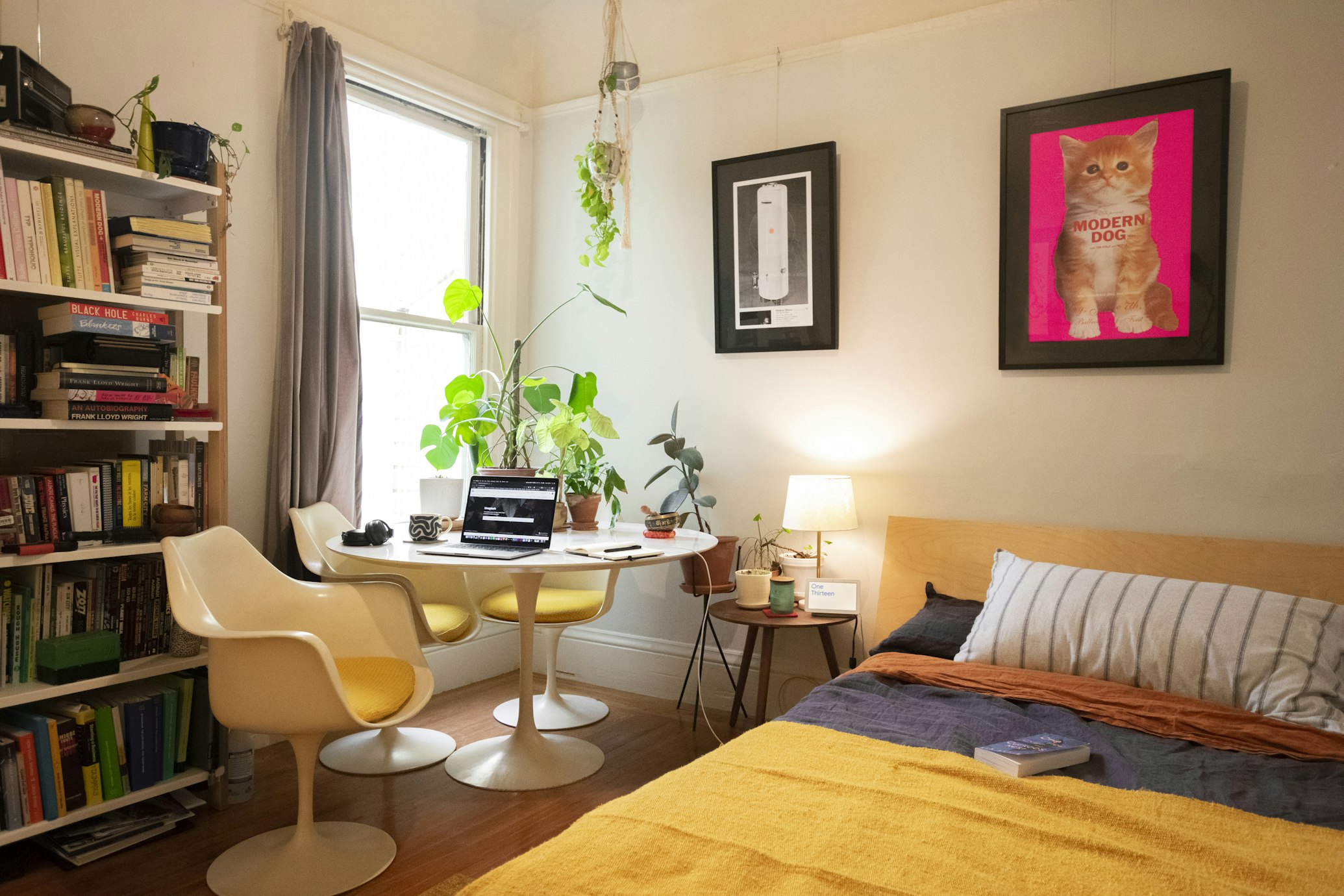
On the other hand, home offices require a different approach. Here, more vibrant colours can boost mental energy and enhance productivity. Green, for example, is an excellent choice for such spaces. Known for its relaxing properties, green can help reduce anxiety, thereby creating a more focused and efficient work environment. It promotes concentration and can contribute to a more productive work session, making it an ideal colour for areas dedicated to study or work. The strategic use of colour in interior design can thus transform not only the aesthetic of a space but also its functionality, directly affecting our daily routines and state of mind.
The Role of Social Support and Collaboration
Artists don’t have to face creative blocks alone. Social support and collaboration can significantly help them in overcoming creative blocks.

Engage in Peer Review and Feedback
- Regular Critique Sessions: Organise sessions with fellow artists to share work and receive constructive feedback. External perspectives can reveal new ideas and approaches.
- Collaborative Brainstorming: Working with peers can stimulate ideas and help overcoming creative blocks. Even a brief discussion about a project can provide the spark needed to start.
- Join a Creative Community: Joining a group—online or in person—offers emotional support and shared resources. The camaraderie and collective wisdom can be invaluable during creative slumps.
Checklist: Social & Collaborative Strategies
- Schedule regular peer review sessions.
- Engage in collaborative brainstorming with fellow creatives.
- Join a creative community or network.
The Impact of Physical Health on Creativity
Never underestimate the connection between your physical well-being and your creative output. A healthy body supports a healthy mind, and vice versa.
Exercise and Movement
- Regular Physical Activity: Incorporating exercise into your daily routine—a brisk walk, yoga, or dancing—can boost blood flow and clear your mind, allowing you to generate fresh ideas.
Movement Breaks: Even short breaks for stretching or a quick walk can reset your brain during long creative sessions.

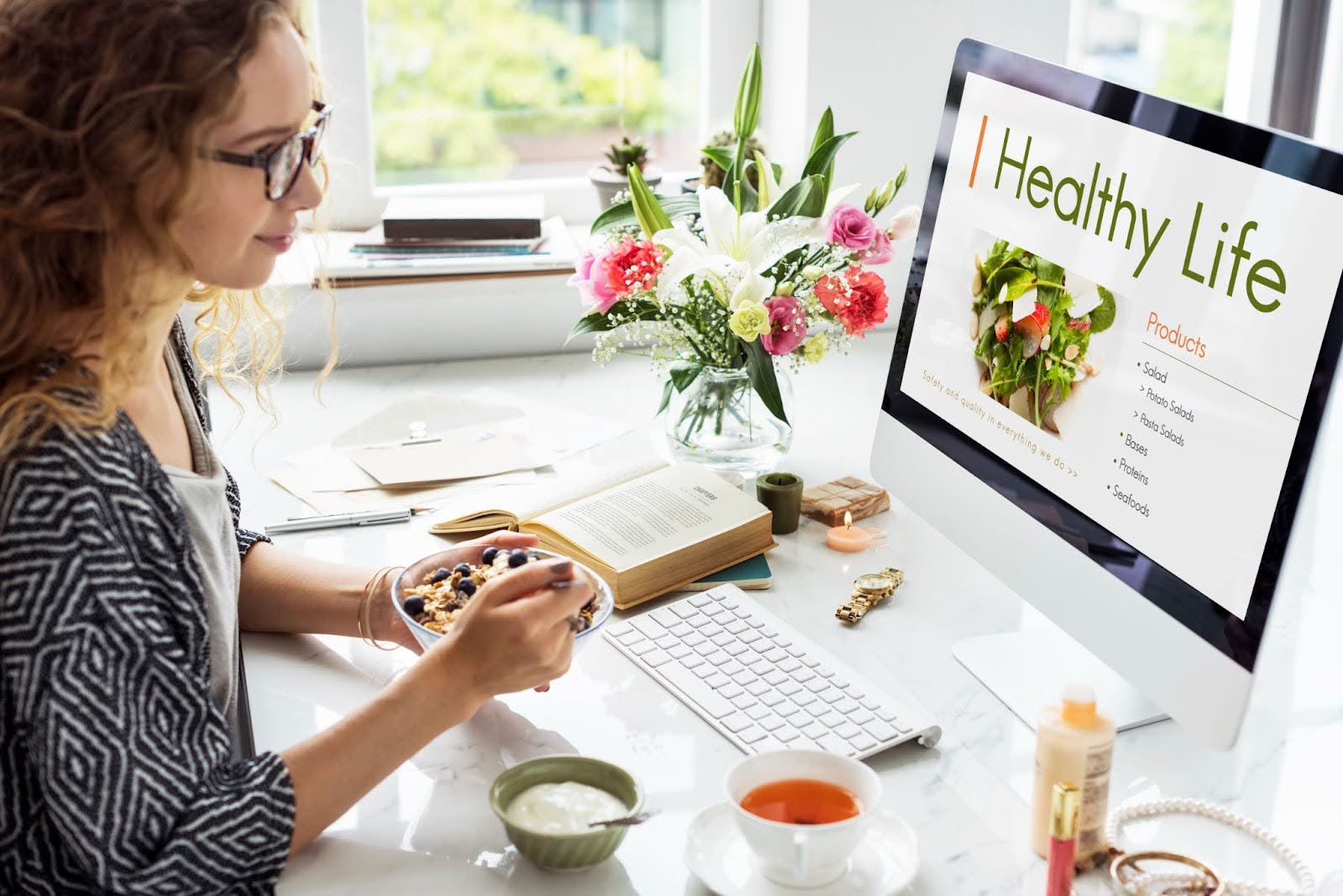
Sleep, Nutrition, and Hydration
- Prioritise Sleep: Adequate rest is critical for cognitive function. Aim for 7–9 hours of quality sleep per night.
- Eat Nutritious Foods: A balanced diet supports brain health and energy levels. Incorporate foods rich in omega-3 fatty acids, antioxidants, and vitamins.
- Stay Hydrated: Dehydration can lead to mental fog and decreased concentration. Keep a water bottle at your desk and sip throughout the day.
Checklist: Physical Health Reminders
- Integrate daily exercise or movement breaks.
- Ensure you get 7–9 hours of sleep.
- Maintain a balanced diet and stay hydrated.
Professional Development to Sustain Creativity
Learning and growing as an artist is key to preventing creative stagnation. Ongoing professional development refines one’s skills and introduces fresh perspectives.
Skill Development Workshops and Courses
- Attend Workshops: Look for workshops or online classes that offer new techniques and creative methods.
Mentorship and Continuous Learning
- Find a Mentor: A mentor can provide guidance, constructive criticism, and emotional support during creative lows.
- Engage in Peer Learning: Share your experiences and learn from others in your creative community. Structured discussions and collaborative projects often lead to innovative solutions.
- Experiment with New Tools: Embrace digital tools and platforms to boost creativity. AI-powered brainstorming tools, for instance, can offer unexpected ideas and solutions.
Checklist: Professional Development
- Enrol in workshops or online courses regularly.
- Experiment with new digital tools or techniques.
- Seek mentorship and participate in peer learning groups.

Digital Tools and Technology: Enhancing Your Creative Process
Various tools can help you get past creative stagnation in our digital age. These solutions are designed to streamline your workflow and generate new ideas, helping you regain creative flow faster.
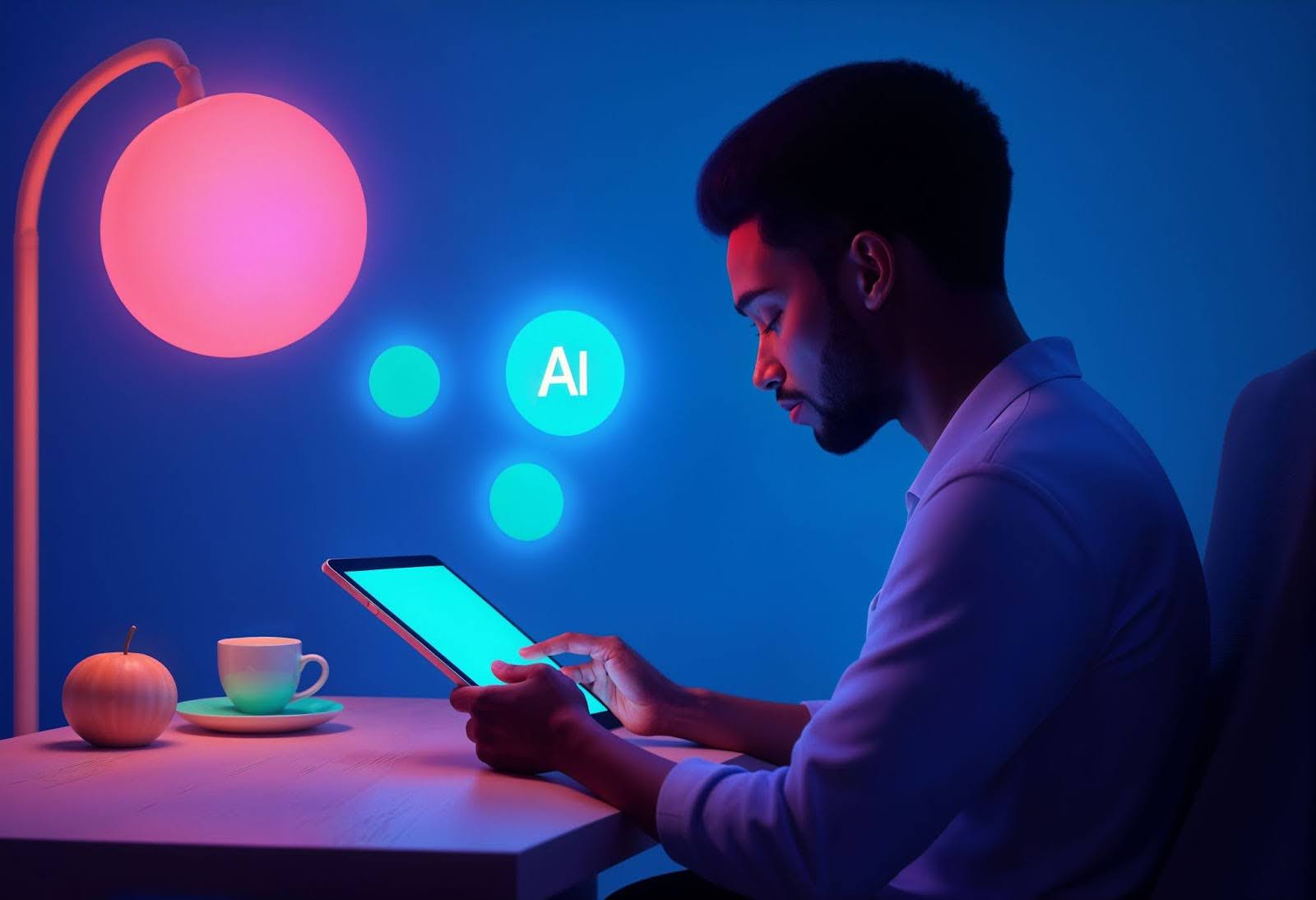
AI-powered brainstorming and Project Management
- Idea Generators: AI tools like ChatGPT or Jasper can provide a steady stream of fresh ideas. Input your project details and let the tool offer creative prompts.
- Project Management Software: Tools such as Notion or Trello can help organise your ideas and tasks, reducing the stress of managing multiple projects.
- Virtual Reality Environments: Some innovative platforms allow you to immerse
yourself in a digital creative space, perfect for stimulating your imagination and experimenting with new concepts.
Read OpenAI’s Guide to AI and Creativity to explore further how AI can boost creativity.
Checklist: Digital Tools
- Use AI-powered brainstorming tools to spark ideas.
- Organise projects with dedicated management software.
- Experiment with virtual creative environments.
Alternative Methods and Experimental Techniques
Alternative methods for managing creative blocks show great promise:
- Mindfulness-based interventions have successfully reduced creative blocks and their duration among professional artists.
- Incorporating movement therapy and somatic practices, such as body-based exercises, dance, or mindful movement, helps artists release tension and promote mental clarity. This approach allows creative energy to flow more freely and effectively combats creative blocks by connecting the body and mind in the creative process.
- New techniques that blend traditional creative methods—like sketching or journaling—with modern technology—such as digital tools, virtual reality, or AI-driven brainstorming—offer fresh solutions. These combinations help artists access new ways of thinking, making it easier to break through blocks and stay productive.
Future Trends in Managing Creative Stagnation
The landscape of creativity is continuously evolving. Here are some emerging trends that promise to reshape how artists manage creative blocks:
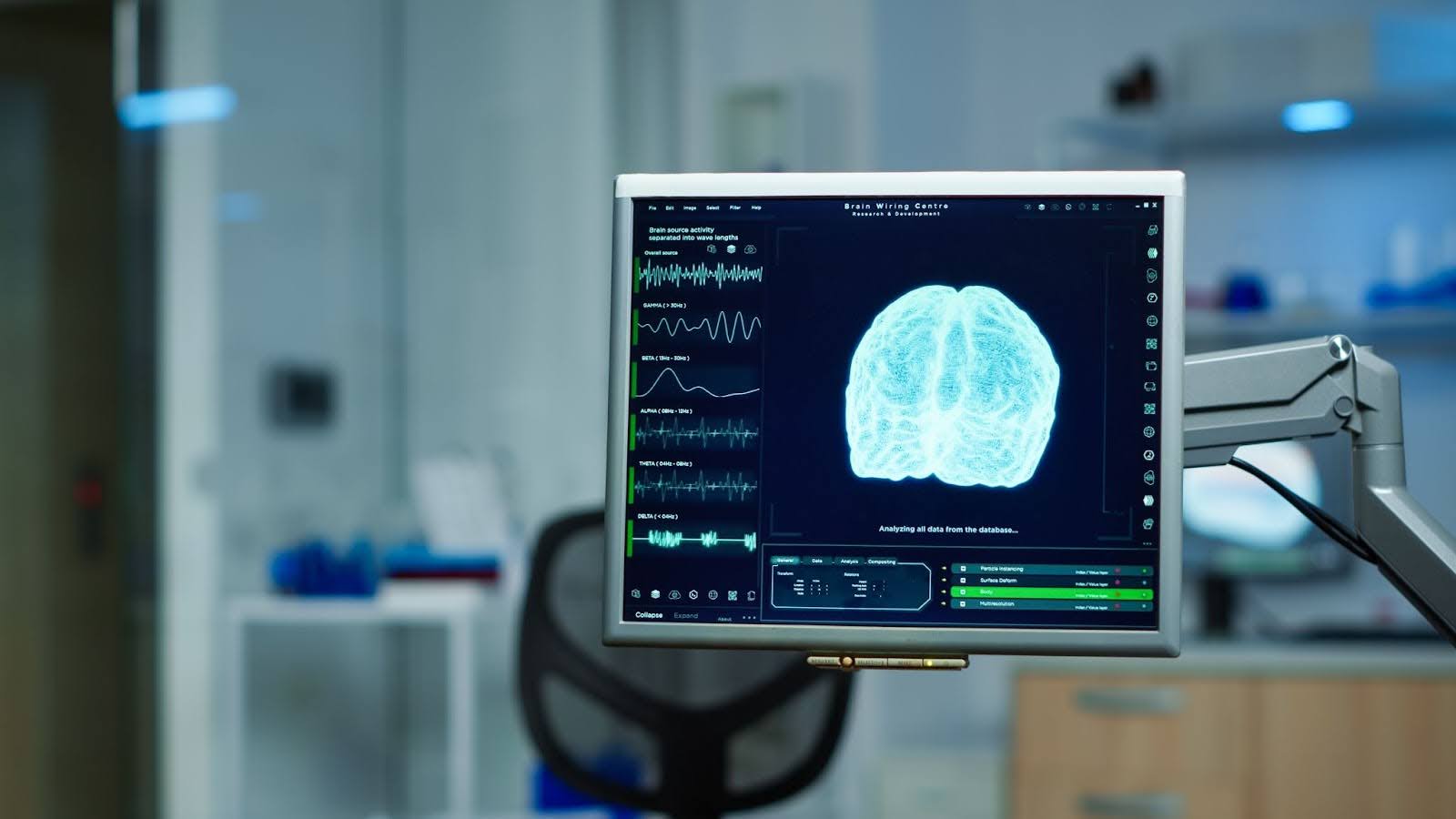
Advanced Neurofeedback and Personalised Strategies
- Neurofeedback Technologies: Early trials using neurofeedback devices help artists recognise the onset of creative blocks and intervene before they become paralysing.
- Personalised Creative Routines: By tracking creative habits, new apps are beginning to offer personalised suggestions for breaking through stagnation.
Integration of AI and Creativity
- AI as a Collaborative Partner: Future tools may generate ideas and collaborate with you to refine your creative process in real-time.
- Data-Driven Insights: Emerging platforms that analyse your creative output can offer tailored strategies to steady your creative flow.
Checklist: Future Trends
- Stay updated on neurofeedback technology and personalised creativity apps.
- Experiment with AI tools designed to complement your creative process.
- Monitor your creative routines for patterns that signal stagnation.
Conclusion
Creative blocks are an inevitable part of the artistic process, but need not be permanent. With the right mix of neuroscience, psychological strategies, environmental tweaks, and modern digital tools, you can learn about overcoming creative blocks and reclaim your creative flow. By adopting a proactive and multifaceted approach, you’re not only addressing the immediate block—you’re setting up a sustainable creative practice that can weather the challenges of today’s dynamic art landscape.
Remember, every artist encounters moments of doubt. The key is to recognise these moments as opportunities for growth rather than insurmountable obstacles. With persistence, experimentation, and the proper support, you can transform creative blocks into stepping stones toward innovation and success.
Happy creating—and may your next burst of inspiration be just around the corner!
FAQs
Creative blocks can result from stress, perfectionism, fear of failure, burnout, and external pressures like deadlines or social media expectations.
They can range from a few hours to several months. Structured techniques and proactive strategies can help reduce their duration.
- Take a short break and switch to a different activity.
- Use brainstorming techniques like mind mapping or a timed challenge.
- Seek feedback from peers or mentors for fresh perspectives.
- Maintain a consistent creative routine.
- Avoid perfectionism by focusing on progress over flawless results.
- Balance work with rest and regular breaks.
- Experiment with new styles and techniques frequently.
Yes! AI-powered brainstorming tools like ChatGPT, Jasper, and others can generate new ideas and help you in overcoming creative blocks.

